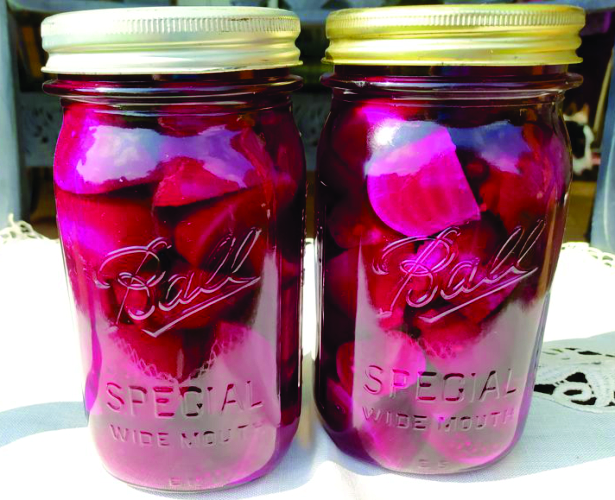
Preserving one’s own produce gives one the most satisfying sense of wellbeing. Yes, bottled beetroot from the shop is probably cheaper but you have been involved in the whole process, from planting the seeds, watering and harvesting and now to cooking and bottling ~ that is what being a smallholder is all about.

Cut off the leaves but leave about 5cm of stalk, as this prevents the colour from “bleeding” during the cooking. Boil the beetroot until soft and allow to cool, preferably overnight.
Prepare your bottles by pouring about 2cm of water into each jar and microwaving it on full power for five minutes. Slosh the boiling water about each jar and discard, and dry the jars by placing them upside down in a warm oven. Don’t dry them with a cloth – this will merely re-contaminate them. The lids, even the new single-use ones, should be boiled to ensure sterility.
Rub the skins off the beetroot ~ they come off very easily ~ and cut to suit your taste. You may like thin or thick slices, chunks or quarters or you may grate them.

In the meanwhile bring the vinegar and pickling spice to the boil. You’ll need about 750ml vinegar for a kilogram of beetroot, with a heaped tablespoon of spices.

When the bottles are dry start layering the cut beetroot, sprinkling every third layer with brown sugar. Leave a little space at the top of the bottle and pour the spiced vinegar into each bottle. Use a knife to move the slice around so that the fluid goes right to the bottom of the bottle and there are no air bubbles.
Seal while warm and label. If one jar is not full, keep it in the fridge and eat it before opening a sealed bottle. Most pickles are best left for a week or two before opening.

